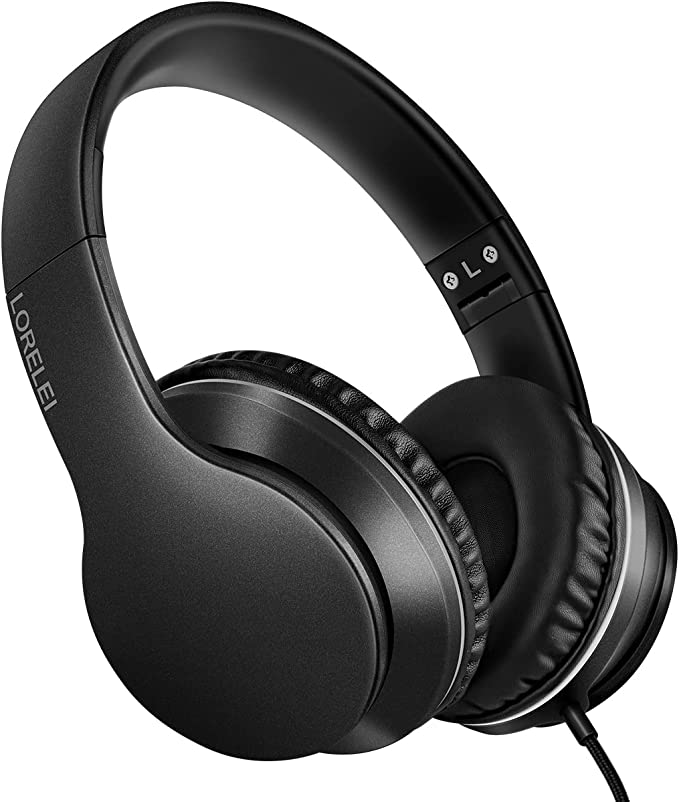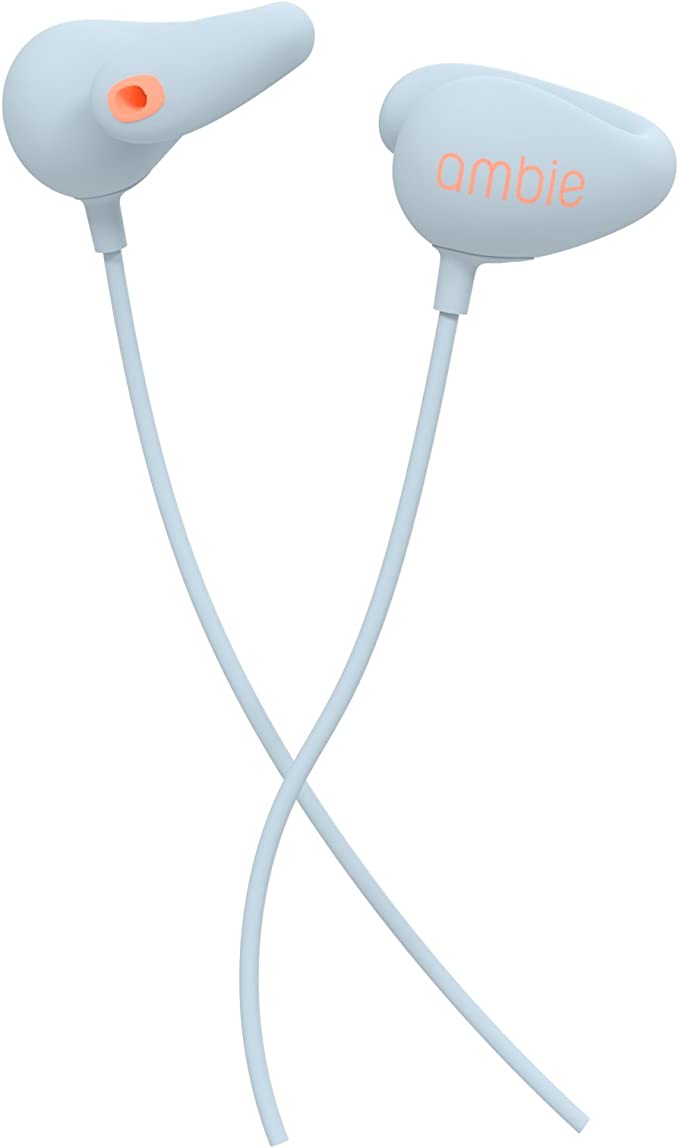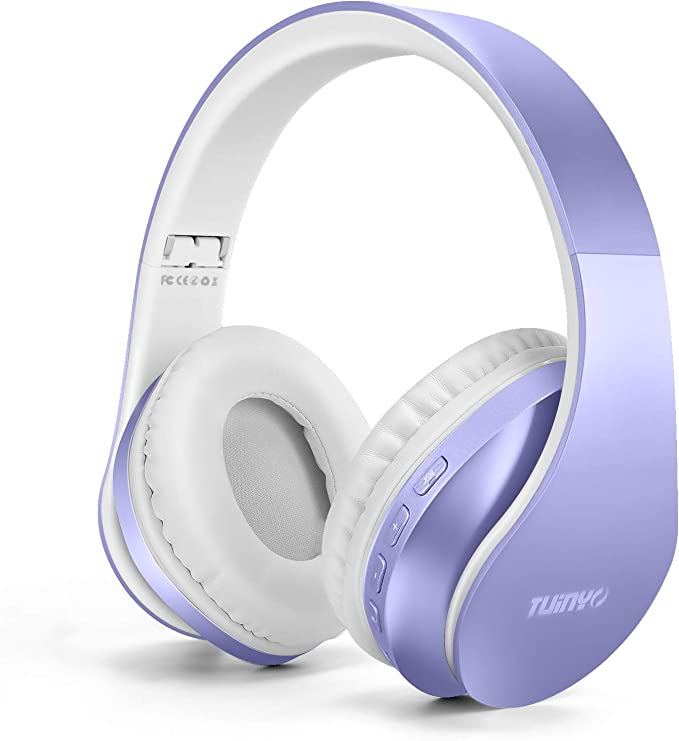It’s a familiar ritual for many of us: reaching for a pair of headphones. Whether it’s to dive into a riveting podcast, lose ourselves in a symphony, take an important call, or simply find a pocket of focus in a bustling world, these everyday portals are integral to modern life. But have you ever paused to consider the intricate tapestry of science and engineering cradled within those earcups? Today, let’s take a closer look, not at a flagship marvel flusso with exotic materials, but at something accessible like the LORELEI X6 Over-Ear Headphones. We won’t be “reviewing” it in the traditional sense. Instead, we’ll use it as a fascinating specimen to explore some universal principles of audio engineering, ergonomics, and material science that make such devices work, and work well for so many. Let’s unravel this together, shall we?

Act I: The Genesis of Sound – How the LORELEI X6 Crafts Your Auditory World
At the very soul of any headphone, including the LORELEI X6, lies the driver. Think of it as a miniature, precision loudspeaker, engineered to sit just millimeters from your ear. The product information for the X6 highlights a High-definition 40mm driver, and that “40mm” isn’t just a random number; it’s a crucial indicator of the headphone’s acoustic potential.
So, how does this tiny marvel generate the thumping bass of your favorite track or the subtle nuances of a whispered vocal? It’s a beautiful dance of physics. Inside each driver, a diaphragm – a thin, semi-rigid membrane – is tasked with vibrating. This vibration is controlled by a voice coil, a delicate coil of wire attached to the diaphragm, which sits within a magnetic field created by a permanent magnet. When an electrical audio signal (your music, your call) flows through the voice coil, it becomes an electromagnet. The interaction between this temporary magnetic field and the permanent magnet’s field causes the voice coil – and thus the diaphragm – to move rapidly back and forth. These movements push and pull the air, creating pressure waves that your ears interpret as sound. It’s a miniature marvel of electromechanical energy conversion.
The “40mm” refers to the diameter of this diaphragm. Generally, a larger diaphragm can move a greater volume of air with each vibration. This is particularly beneficial for reproducing lower frequencies – the bass and sub-bass that provide depth and warmth to music. It’s why the LORELEI X6 description mentions “rich bass.” A larger surface can more effectively create those longer sound waves. Simultaneously, a well-engineered 40mm driver can also maintain the agility needed for “crisp mids” – the frequency range where human voices and many instrumental melodies reside. It’s a balancing act: big enough for power, precise enough for clarity.
Then there’s the “Stereo Bass” aspect. Stereo sound, at its core, uses two independent audio channels (left and right), each feeding its respective driver. This separation allows for the creation of a soundstage – an illusion of space and directionality in the audio. When you hear a guitar riffパン to the left or footsteps approaching from the right in a game, that’s stereo imaging at work, making the listening experience more immersive and realistic.
Imagine settling in with the LORELEI X6 to listen to an orchestral piece. The 40mm drivers are working to bring you the rumble of the timpani (thanks to that air-moving capability) while simultaneously delivering the delicate shimmer of the violins. Or picture yourself engrossed in a podcast; the clarity of the mids, as intended by the driver design, ensures every word is intelligible. This is the science of sound reproduction, aiming to faithfully recreate the original recording for your personal enjoyment.

Act II: The Art of Disappearing – Engineering Comfort for Endless Hours
Sound quality is paramount, but if a pair of headphones feels like a medieval torture device after twenty minutes, its acoustic brilliance is moot. This is where ergonomics – the science of designing for human use and well-being – takes center stage. The LORELEI X6 is an Over-Ear design, and this choice has significant implications for comfort, especially during extended listening sessions.
Unlike on-ear headphones that press directly against the delicate cartilage of your ears, over-ear models aim to encircle the ear, resting primarily on the less sensitive areas of your head. This distributes the clamping force over a larger surface area, significantly reducing pressure points. The LORELEI X6’s “ultra-soft ear cushions” play a vital role here. Think of them as tiny, perfectly contoured pillows for your ears. These cushions, often made from plush, breathable materials encasing a soft foam (perhaps a type of memory foam that conforms to your unique shape), not only enhance comfort but also help create a seal around your ears. This seal is important for two reasons: it improves bass response by preventing sound leakage, and it contributes to passive noise isolation, which we’ll touch on later.
Complementing the ear cushions is a “padded headband.” Much like the cushions, this padding on the part of the band that rests atop your head helps to distribute weight and prevent a single point of pressure from causing discomfort. And speaking of weight, the LORELEI X6 is described as “lightweight,” tipping the scales at approximately 7.25 ounces (around 205 grams). This might not seem like a headline feature, but in the world of ergonomics, every gram counts. Less mass means less strain on your head and neck muscles, a critical factor if you’re wearing them for hours. It’s simple physics: Force = Mass x Acceleration. Even when stationary, gravity is that acceleration, and a lighter mass means less downward force.
Finally, the “adjustable slider” mechanism is a crucial, if often overlooked, element of ergonomic design. We humans come in all shapes and sizes, and so do our heads. An adjustable headband allows you to customize the fit, ensuring the earcups align perfectly with your ears and the headband sits comfortably. This not only maximizes comfort but also ensures the drivers are optimally positioned for the best acoustic performance. The goal, as the product description states, is a “fatigue-free listening experience.”
Consider the student immersed in a late-night study session, the remote worker navigating a day فيلمed with video calls, or the traveler on a long-haul flight. In each scenario, the thoughtful combination of an over-ear form factor, plush cushioning, lightweight construction, and adjustability in headphones like the LORELEI X6 aims to make the technology almost disappear, allowing the user to focus on their audio content without physical distraction.

Act III: Built for the Journey – The Science of Durability and Graceful Portability
Our headphones often lead a rough life. They’re tossed into bags, accidentally knocked off desks, and sometimes, especially if shared with younger family members, subjected to less-than-gentle handling. This is where material science and mechanical design come into play, ensuring these everyday companions can withstand the rigors of daily use.
The LORELEI X6 is described as being built with “strong and sturdy plastic.” While “plastic” is a broad term, modern engineering polymers used in consumer electronics are a far cry from the brittle plastics of yesteryear. These materials are often selected for their high impact resistance, tensile strength, and ability to be molded into complex shapes, all while keeping weight to a minimum. The goal is to create a chassis that can absorb minor shocks and stresses without cracking or deforming.
Then there’s the “foldable design.” This is a neat piece of mechanical engineering that significantly enhances portability. Cleverly placed hinges allow the earcups to fold inwards, often into the curve of the headband, drastically reducing the headphones’ overall footprint. Suddenly, a pair of over-ear headphones, which can be bulky, becomes much more amenable to being packed into a backpack, a carry-on, or even a larger purse. It’s the kind of practical ingenuity that makes a tangible difference for users on the go.
And who among us hasn’t battled the infamous “cable monster” – that seemingly sentient tangle of wires that materializes in our bags? The LORELEI X6 addresses this with a 1.45M (approximately 4.75 feet) No-Tangle Nylon Braiding Cord. Why are braided cables often better at resisting tangles? It’s down to a few factors. The nylon braiding itself adds a degree of stiffness and a textured surface compared to smooth, rubbery insulation. This makes the cable less prone to kinking and forming tight loops that can easily interlock. The inherent structure of a braid can also help distribute stress along the cable, potentially increasing its lifespan by reducing strain on the delicate wires within, especially near the connector points. It’s a small detail, born from material science and textile engineering, that provides a significant boost in everyday convenience and reduces a common point of frustration.
Picture the daily commuter navigating a crowded train, the student quickly stowing their headphones between classes, or a parent handing a pair to their child. The durability offered by robust plastics, the space-saving convenience of a foldable design, and the frustration-sparing quality of a tangle-resistant nylon cord, as seen in the LORELEI X6, are all testaments to how thoughtful engineering can make everyday technology more resilient and user-friendly. The product information mentions it’s “suitable for adults and kids,” and these durability features certainly contribute to that suitability, especially for younger, perhaps less careful, users.
Act IV: The Lifeline – Wired Fidelity and Effortless Control
In an era dominated by wireless everything, the humble wired connection still holds a special place for many, and for good scientific reasons. The LORELEI X6 utilizes a standard 3.5mm audio jack, a connector that has been an audio stalwart for decades. Its longevity is a testament to its reliability and universality.
One of the primary advantages of a wired connection is signal integrity. The audio signal travels directly from your device (phone, laptop, MP3 player) to the headphone drivers via a physical cable. This direct path minimizes the chances of interference, signal degradation, or the audio compression that can sometimes occur with wireless Bluetooth transmission, especially in more affordable devices. Furthermore, wired connections are inherently lag-free. There’s no delay between what’s happening on your screen (like a video game or a movie) and what you hear, which can be critical for an immersive experience. And, of course, wired headphones like the LORELEI X6 don’t require batteries to power the audio transmission itself, so you never have to worry about them dying mid-song or mid-call.
The LORELEI X6 also features an in-line microphone and controls. This is a simple yet highly effective piece of user interface design. Small buttons integrated into a module on the cable allow for basic functions like answering or ending calls, and skipping tracks. From a human factors perspective, tactile buttons provide clear physical feedback, often allowing users to perform these actions without even looking, relying on muscle memory. The microphone, positioned in-line, is typically closer to the mouth than a microphone integrated into an earcup might be, which can aid in clearer voice pickup during calls.
Finally, let’s revisit the concept of Noise Isolation. As mentioned earlier, the over-ear design of the LORELEI X6, with its cushioned earcups creating a seal around your ears, provides a degree of passive noise isolation. This is different from active noise cancellation (ANC), which uses microphones and complex electronics to actively generate “anti-noise” to cancel out ambient sounds. Passive isolation is more like wearing earmuffs; it physically blocks a certain amount of external sound from reaching your ears simply by creating a barrier. This can be surprisingly effective in moderately noisy environments, helping you focus on your audio content without needing the added complexity or battery drain of ANC.
Imagine taking an important call while walking down a moderately busy street – the in-line mic helps your voice come through, while the passive isolation slightly dampens the traffic hum. Or picture yourself in a bustling café; the seal of the earcups helps you immerse yourself in your music or podcast, providing a little bubble of auditory focus. These are the practical benefits of well-established wired technology and thoughtful physical design.

The Everyday Extraordinary – Appreciating the Science in Your Sound
The LORELEI X6 Over-Ear Headphones, much like many of the seemingly simple technological tools we use daily, serve as a wonderful lens through which to appreciate a confluence of physics, engineering, ergonomics, and material science. From the electromechanical ballet within the 40mm drivers crafting the soundscapes we cherish, to the ergonomic considerations ensuring hours of comfortable wear, and the material science that provides durability and even helps tame the dreaded cable tangle – every feature is an echo of scientific principles applied with a user in mind.
It’s truly a joy to understand the ‘how’ and ‘why’ behind the technology that shapes our daily experiences. And when these principles are applied thoughtfully, as the numerous positive user ratings (4.4 out of 5 stars from 11,499 global ratings, according to the provided information) for the LORELEI X6 seem to suggest, they can result in products that deliver genuine value and satisfaction. So, the next time you pick up your headphones, any headphones, take a moment. There’s an unheard symphony of science and ingenuity playing just for you, long before your music even begins. Keep those ears, and that curiosity, open.




